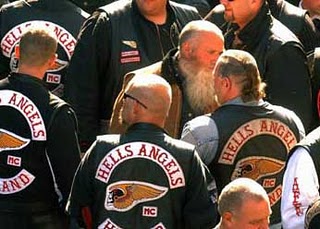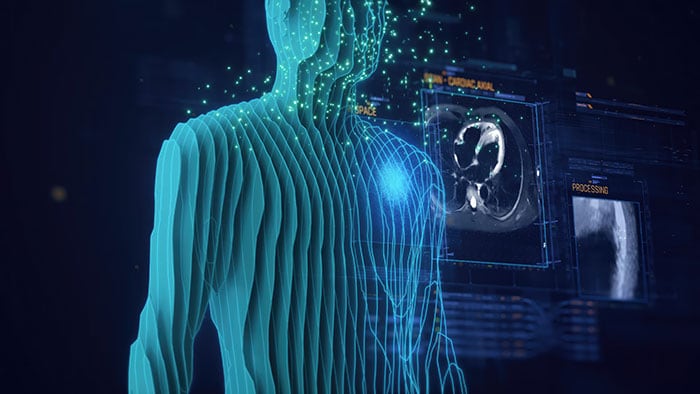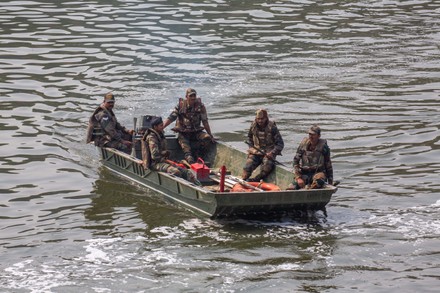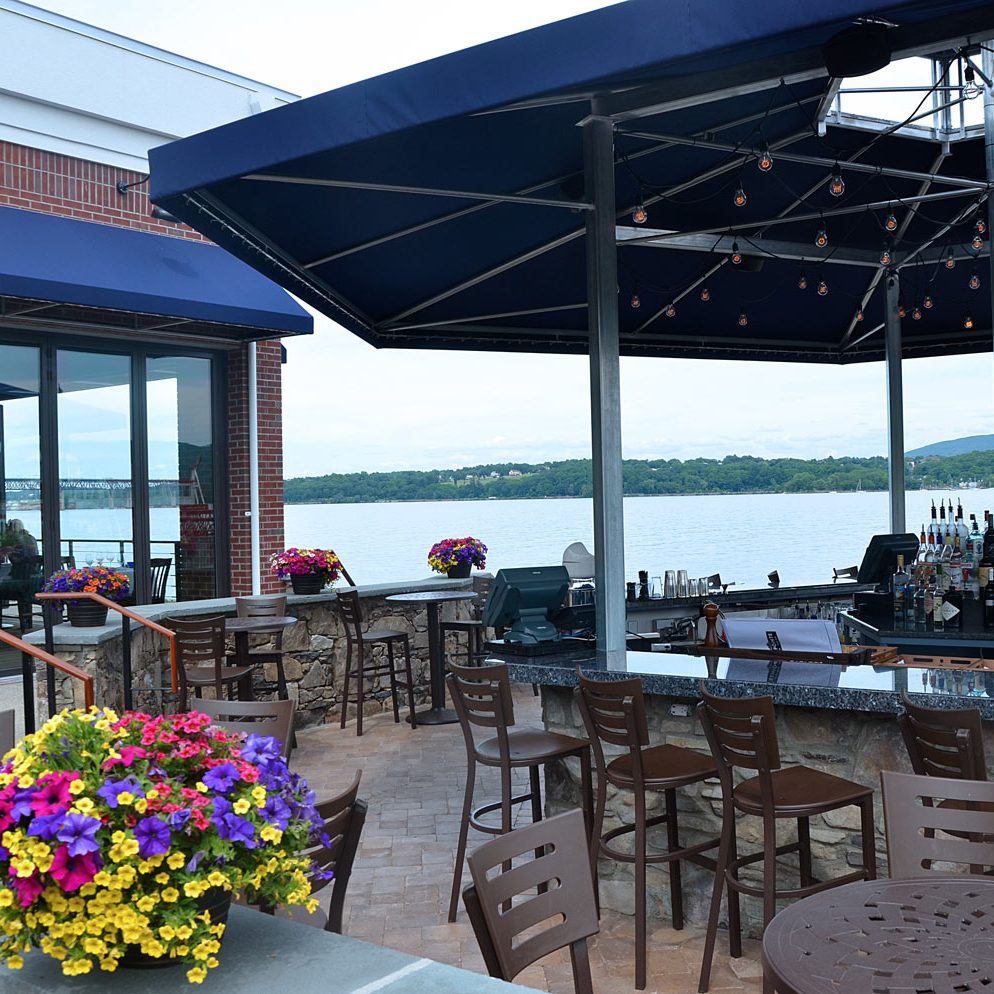Hells Angels: Structure, Organization, And Activities

Table of Contents
The Hierarchical Structure of the Hells Angels
The Hells Angels Motorcycle Club isn't a chaotic free-for-all; it operates under a strict, hierarchical structure. Understanding this structure is key to comprehending the club's power and longevity. This hierarchy extends from the aspiring members at the bottom to the powerful leadership at the top, with layers of authority and responsibility in between.
Prospects and Members: The Road to the Patch
Becoming a full-fledged member of the Hells Angels, a process known as "patching in," is far from easy. Prospects, or prospective members, undergo a rigorous initiation period, proving their loyalty and commitment to the club. This process can take years and involves:
- Extensive probationary period: Prospects perform menial tasks, run errands, and essentially prove their worthiness.
- Demonstrated loyalty and commitment: Unwavering loyalty to the club and its members is paramount.
- The significance of the "patch": The coveted Hells Angels patch represents membership and signifies a powerful allegiance. Wearing it is a privilege earned through dedication and proven loyalty.
Different chapters, or "colors," exist across the globe, and their power and influence can vary depending on their history and connections to "mother" chapters.
Chapter Organization: Internal Structure and Governance
Each Hells Angels chapter operates with its own internal structure, governed by elected officers who maintain order and enforce club rules. These officers typically include:
- President: The leader of the chapter, responsible for overall operations and decision-making.
- Vice President: Second-in-command, stepping in for the President when necessary.
- Sergeant-at-Arms: Enforces club rules and discipline.
- Treasurer: Manages the chapter's finances.
- Secretary: Maintains records and handles correspondence.
Regular club meetings are crucial for internal decision-making, ensuring cohesion and the enforcement of club rules and bylaws.
The Mother Chapters and International Structure: Global Reach and Influence
The concept of "mother chapters" is significant within the HAMC's global network. These established chapters wield considerable influence over newer chapters, acting as mentors and often providing guidance and support. The international reach of the HAMC is extensive, though the exact nature of communication and coordination between chapters worldwide remains largely unknown and often fragmented. Some influential mother chapters include those in California and other historically significant locations.
Hells Angels' Activities: Beyond Motorcycling
The Hells Angels are more than just a motorcycle club. While their image is deeply rooted in motorcycle culture, their activities extend far beyond riding. It's crucial to address both the legal and illegal aspects of their operations, acknowledging the diversity of their involvement.
Legal Businesses and Criminal Activities: A Dual Existence
The HAMC engages in both legal and illegal activities. They have been known to operate legitimate businesses, such as merchandising, generating revenue through the sale of club-related apparel and merchandise. However, the club has also been extensively documented as being involved in various criminal activities, including:
- Drug trafficking: The distribution and sale of illicit drugs are a well-known source of revenue.
- Extortion and racketeering: Using intimidation and violence to extort money from businesses.
- Violence and assault: The club has a long history of violent conflicts with rival gangs and law enforcement.
Investigating and prosecuting HAMC members is notoriously challenging due to their strong code of silence and secretive nature.
Motorcycle Rallies and Public Image: Branding and Perception
Motorcycle rallies play a significant role in the Hells Angels' culture and public image. These events, often large-scale gatherings, contribute to the club's branding and reinforce its connection to the broader biker community. Famous rallies, often attracting media attention, showcase the club's strength and unity. However, media portrayals of the HAMC often sensationalize their activities, contributing to a negative public perception.
Law Enforcement and the Hells Angels: An Ongoing Conflict
The relationship between law enforcement agencies and the Hells Angels is characterized by ongoing conflict and persistent investigations.
Investigations and Prosecutions: Challenges and Strategies
Investigating and prosecuting Hells Angels members presents significant challenges for law enforcement. The club's secrecy, internal discipline, and the fear among witnesses often hinder investigations. Law enforcement agencies utilize various strategies, including:
- Undercover operations: Infiltrating the club to gather evidence from within.
- Wiretaps and surveillance: Monitoring communications and activities.
- Financial investigations: Tracing the flow of money to uncover illegal activities.
Specific instances of major law enforcement operations targeting the HAMC are well-documented, revealing the ongoing battle between the club and authorities.
Legal Battles and Court Cases: Precedents and Implications
Numerous court cases involving the Hells Angels have shaped legal precedents regarding gang-related crimes and the prosecution of organized crime. These cases highlight the legal strategies employed by both the prosecution and the defense, influencing future legal battles. Many ongoing legal battles and investigations continue to challenge law enforcement's efforts to dismantle the organization.
Conclusion
The Hells Angels Motorcycle Club is a complex organization with a deeply entrenched hierarchical structure, engaging in both legal and illegal activities. Understanding its intricate internal workings, its global reach, and its ongoing conflicts with law enforcement requires careful consideration of both historical context and contemporary investigations. Further research into the Hells Angels MC, exploring reputable sources for accurate information about their history, activities, and ongoing legal battles, is essential to a complete understanding of this multifaceted organization. Investigating other similar organizations can provide further insight into the complexities of outlaw motorcycle clubs.

Featured Posts
-
 Ai And The Future Of Healthcare Key Findings From The Philips Future Health Index 2025
May 25, 2025
Ai And The Future Of Healthcare Key Findings From The Philips Future Health Index 2025
May 25, 2025 -
 Emergency Response Underway Pedestrian Accident On Princess Road Live Updates
May 25, 2025
Emergency Response Underway Pedestrian Accident On Princess Road Live Updates
May 25, 2025 -
 Facing Retribution The High Cost Of Challenging The Status Quo
May 25, 2025
Facing Retribution The High Cost Of Challenging The Status Quo
May 25, 2025 -
 Wolff Responds To Russells Underrated Remark Lucky To Have Him
May 25, 2025
Wolff Responds To Russells Underrated Remark Lucky To Have Him
May 25, 2025 -
 French Pms Policies Under Scrutiny A Former Pm Speaks Out
May 25, 2025
French Pms Policies Under Scrutiny A Former Pm Speaks Out
May 25, 2025
Latest Posts
-
 Where To Find The Best Shrimp In The Hudson Valley 5 Top Choices
May 26, 2025
Where To Find The Best Shrimp In The Hudson Valley 5 Top Choices
May 26, 2025 -
 5 Excellent Shrimp Restaurants In The Hudson Valley
May 26, 2025
5 Excellent Shrimp Restaurants In The Hudson Valley
May 26, 2025 -
 Hudson Valleys Top Shrimp Dishes 5 Restaurants To Try
May 26, 2025
Hudson Valleys Top Shrimp Dishes 5 Restaurants To Try
May 26, 2025 -
 Best Places To Find Delicious Shrimp In The Hudson Valley
May 26, 2025
Best Places To Find Delicious Shrimp In The Hudson Valley
May 26, 2025 -
 Top 5 Hudson Valley Restaurants For Shrimp
May 26, 2025
Top 5 Hudson Valley Restaurants For Shrimp
May 26, 2025
